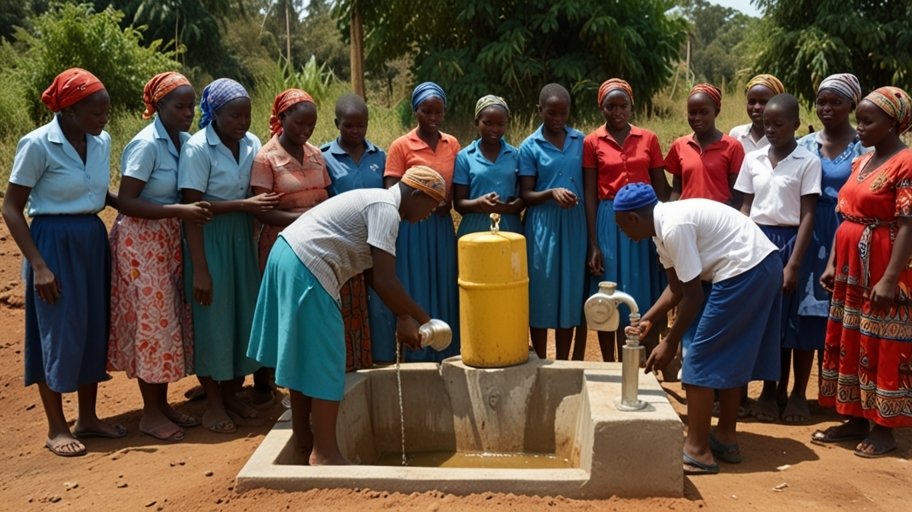The most populous Central American country is Guatemala. The country has experienced phenomenal economic growth over the past ten years; however, the infrastructure developed in the country failed to match its ever-expanding economy and population. Poorly maintained roads, inadequate public transportation networks, underdeveloped systems of water and sanitation facilities, and unstable energy lines are some of the most significant factors that restrict it from competing with other developed countries of the world and limit the scope for poverty reduction. Guatemala is now at the crossroads since big projects are being undertaken to enhance the infrastructure and meet future needs.
This article explores the road to infrastructure development in Guatemala, identifies some of the main current projects, and calls out for future infrastructure needs to ensure sustainable growth and national development.

Country Overview: Current State of Guatemala’s Infrastructure
Guatemala’s infrastructural difficulties arise from several decades of poor investment and asymmetric development. For example, according to the World Economic Forum’s Global Competitiveness Report, it has normally ranked Guatemala below average in the quality of infrastructures, especially in transport, energy, and supply of water. This gap, however cuts across into the rural sector where it is most significant because such services are only available and accessible in fewer areas or are nonexistent in some areas.
Infrastructural Lagging Sectors
- Transportation
Guatemala has one of the least developed road networks in the region. The majority of its roads are unpaved, mainly in rural areas. According to CIV’s statistics, only 45% of roads in the country are paved, and most of the remaining paved roads are in bad conditions. These factors hamper connectivity and make expensive transportation both costly and time-consuming and insecure.
Public transportation is also underdeveloped. Urban transit systems in Guatemala City, the capital and largest city, are characterized by inefficiency, overcrowding, and risks to personal safety. Bus services, both within cities and between rural and urban centers, are often unreliable, leading to long travel times for passengers. The rail network is almost non-existent, because freight and passenger services have been in suspension for years due to a lack of investment.
2.Energy
Despite the improvements made lately, there is still much work to be done. In contrast with the urban regions, there is a greater number of power outages in the rural regions, and few have connections. Biomass is the most widely used form of cooking and heating for most of the population, especially for the indigenous and rural settings.
Furthermore, Guatemala over-reliance on hydropower for energy production is renewable but also prone to seasonal fluctuations, such as droughts, which may reduce its levels of reliability. Clean energy, including solar, wind, and geothermal energy, should significantly be increased to balance the mix of energy and support sustainable development.
- Water and Sanitation
The challenges of the water and sanitation infrastructure in Guatemala are enormous. Only about 46% of the population has access to piped water, and access to sanitation services is even worse. Poor quality of water coupled with grossly inadequate treatment of wastewater contributes to high levels of waterborne diseases in this country.
The country’s water management is another challenge. Though Guatemala boasts adequate water resources, their distribution is uneven, and the governance of water is weak. This problem, compounded by deforestation and degradation of the environment, does not help the availability of water and, naturally, during dry seasons.
Current Infrastructure Projects
It was in the recent years when the Guatemalan government, through collaboration with other international organizations, private sector partners, and regional institutions, undertook several infrastructures to address the deficiencies facing this country. Some of the projects are capable of revolutionizing key sectors and driving national development.
- Development of Road Networks
A high priority of the government in its infrastructural programmes continues to be the improvement of the country’s road network. Several projects on road expansion and rehabilitation are underway utilizing funds from international organizations such as the World Bank and the IDB.
Highway CA-9 Improvement: The improvement and upgrading of CA-9 highway, which runs from the capital to Puerto Barrios on the Atlantic coast, represent one of the most important projects. It’s one of the major roads in the country and is considered the gateway to regional and international markets. Expansion of lanes and bypassing of central urban areas are supposed to lessen congestion and make roads safer.
Pacific Corridor Upgrade: The other key road upgrading involves the Pacific Corridor, a prime transport artery stretching all the way from Mexico, through Guatemala, and to El Salvador. Government initiatives will upgrade sections of the corridor to facilitate cross-border trade as well as regional connectivity.
- Energy Infrastructure and Renewable Projects
Energy is one area that will gain special attention with the plan to diversify energy sources and enhance access to electricity in the rural areas of Guatemala. It intends to invest its major in renewable energy, which has environmental advantages and economies of scale along the long-term perspective.
The renovation and expansion of hydroelectric plants in collaboration with the private sector are being invested in by the government. Part of this project is an upgrade to the Chixoy Hydroelectric Plant: that is the biggest plant in the country and accounts for a considerable share of the national energy supply. It aims to increase capacity and improve efficiency and dependability.
Solar and Wind Energy: The natural conditions in Guatemala create a perfect environment for starting solar and wind energy schemes. The country has started to feel investments in gigantic solar farms and wind parks with the San Antonio El Sitio Wind Farm and other assorted solar energy projects implemented to reduce dependence on hydropower and fossil fuels. These renewable energy initiatives are not only needed to meet the surging energy demand but also to alleviate carbon emissions and work toward global climate targets.

- Water and Sanitation Projects
The country faces vital challenges in improving access to water and sanitation for long-term development. Innumerable key projects have been initiated in water supply systems, sanitation, and wastewater treatment.
The most ambitious project to restore Lake Amatitlán should clean up a vital source of water suffering from extreme pollution due to untreated waste water and industrial run-off. It is financed by international donors and the Guatemalan government. It aims at cleaning up the lake, reducing levels of pollution, and improving water quality for the communities surrounding the lake.
Community-level Water and Sanitation Projects: There are thousands of small community projects implemented in rural areas that provide potable water and sanitation. The government is working with NGOs and other international partners to construct water treatment plants, have rainwater harvesting systems, and develop latrines for needy communities.
- Telecommunication and Digital Infrastructure
In a world becoming increasingly digital, the government of Guatemala is working to improve its telecommunications infrastructure, which would support economic growth-a real challenge in remote regions where access to the internet and mobile services would be limited.
The top priority is fiber-optic network expansion, through which far-flung towns will be connected with high-speed Internet to help harness the use of education, health services, and other e-commerce options available for the locality. The government is partnering with private telecommunications companies in expending broadband coverage for the rest of the country.
Future Infrastructure Requirements
Despite the numerous ongoing initiatives, a large portion of the country’s infrastructure needs remains vacant and requires constant investment along with political will. A variety of key infrastructure needs should be prioritized in order for the country to take full advantage of its economic potential, enhance living standards, and decrease poverty.
- Improving Rural Roads and Transportation Infrastructure
While future projects will upgrade the bulk of the major highways and metropolitan road networks, urgent and immediate focus will be needed on the roads in rural areas. Such connectivity will bring villages closer to markets, better access to healthcare, education, etc. Improving and managing roads in such rural areas will then constitute the most vital ingredient toward realizing inclusive development and minimizing the regional disparities.
Comprehensive public urban transportation also needs reform. Investments in BRT systems, light rail, and electric buses would alleviate congestion, improve air quality, and offer urban citizens alternative, safer, and efficient modes of transport.
- Strenthening Resilience to Natural Disasters
Since the country is naturally prone to devastating earthquakes, hurricanes, and landslides, developing the infrastructure resilience of the country to these hazards will be crucial in building safeguards that help protect development gains from future disasters.
Critical investments will include disaster-resilient housing, flood-control systems, and earthquake-resistant buildings; enhanced early warning systems and better preparedness and emergency response infrastructure will also help protect vulnerable communities from climate-related disaster impacts.
- Renewable Energy Source Increase
Hydropower will expose the country to the negative impacts of water scarcity due to climate change. It is, therefore, through renewable energy sources, like solar and wind, as well as geothermal, that there will be a reliable source of sustainable energy. Additionally, the government should invest in energy storage systems, smart grids, and rural electrification projects for increased accessibility of energy in the entire country. - Upgrade Water and Sanitation Services
Water and sanitation are among the most urgent infrastructure challenges Guatemala is facing. This will need a lot of investment to be done in water treatment plants, sewage systems, and wastewater treatment facilities, mainly in rural areas and informal settlements. Climate change will add further pressure on water resources, so investment in better management systems of water, including rainwater harvesting, reforestation, and aquifer recharge projects, is crucial. - Sustainable Urban Development
Guatemala is experiencing rapid urbanization, and the city of Guatemala is overpopulated. Future developments in infrastructure should be sustainable city planning with affordable housing and green spaces, efficient public transport, and waste management systems in place. The quality of life in the cities would also be enhanced through smart cities, such as digital applications for traffic management and service delivery. - Digital Transformation and Technology Infrastructure To compete in the global economy, Guatemala must invest in digital infrastructure. Broadband access to internet must be extended to the rural areas to bridge the access gap between those who do and those who don’t. Furthermore, cybersecurity data infrastructure and literacy programs will also enable the growth of a growing national digital economy.

Conclusion
Guatemala’s infrastructure development is at a crossroads. On the one hand, several important projects are underway to improve transportation, energy, water, and telecommunications infrastructure. However, the country faces huge challenges in meeting its future needs. It will require comprehensive and sustained investments in rural connectivity, renewable energy, water management, and urban development for Guatemala to achieve its development goals.
Strategic planning and partnership with the private sector and other international organizations will be important milestones for the country’s continuing growth while making sure that infrastructure development is not only for economic growth but also positively impacts the quality of life for all Guatemalans, especially for the most vulnerable regions.



